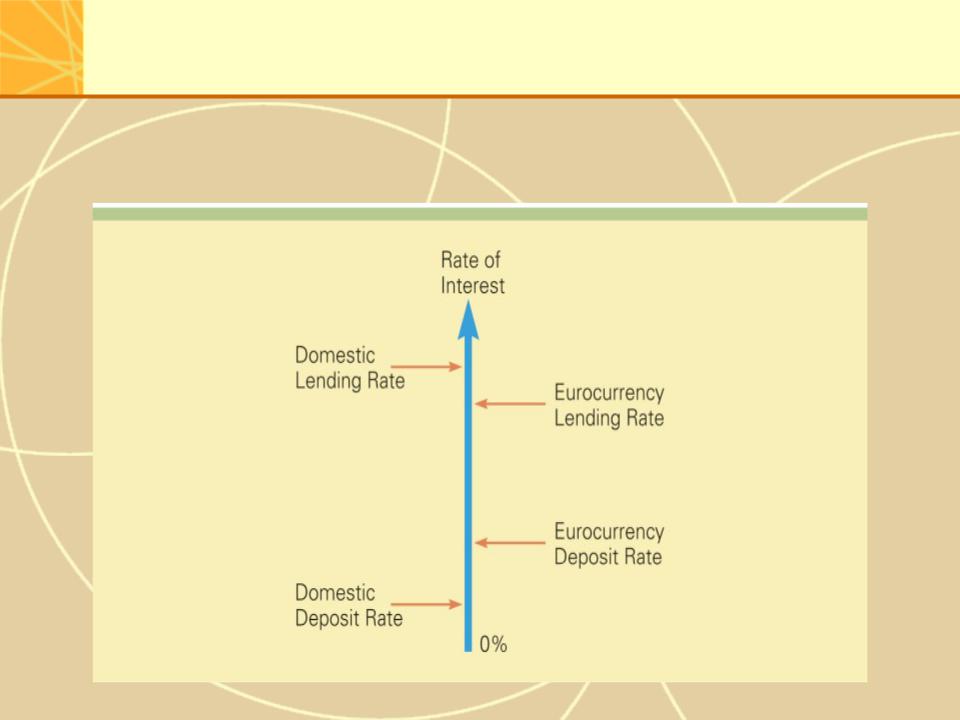
- •The Global Capital Market
- •Introduction
- •Benefits Of The Global Capital Market
- •Functions Of A Generic Capital Market
- •Functions Of A Generic Capital Market
- •Attractions Of The Global Capital Market
- •Attractions Of The Global Capital Market
- •Attractions Of Global Capital Market (GCM)
- •Figure 11.3: Risk Reduction
- •Growth Of The Global Capital Market
- •Growth Of The Global Capital Market
- •Growth Of The Global Capital Market
- •Growth Of The Global Capital Market
- •Global Capital Market Risks
- •The Eurocurrency Market
- •Genesis And Growth Of The Market
- •Growth Of The Global Capital Market
- •Attractions Of The Eurocurrency Market
- •Attractions Of The Eurocurrency Market
- •Drawbacks Of The Eurocurrency Market
- •The Global Bond Market
- •Attractions Of The Eurobond Market
- •The Global Equity Market
- •Foreign Exchange Risk
- •Implications For Managers

Growth Of The Global Capital Market
Two factors are responsible for the growth of GCM
1.Advances in information technology
2.Financial services companies now engage in 24-hour- day trading – the international capital market never sleeps
3.However, this also means that shocks that occur in one financial market spread around the globe very quickly
11-11

Growth Of The Global Capital Market
4. deregulation by governments
Traditionally, governments have limited the ability of foreign investors to purchase significant equity positions in domestic companies, and the amount of foreign investment citizens could make
Since the 1980s, these restrictions have been falling in response to the development of the Eurocurrency market, and also pressure from financial services companies
11-12

Growth Of The Global Capital Market
Many countries have also dismantled capital controls making it easier for both inward and outward investment to occur
This trend has spread from the developed world to the emerging nations
The global capital market is expected to continue to grow
11-13

Global Capital Market Risks
Some analysts worry that the deregulation of capital markets and loosening of controls on cross-border capital flows make individual nations more vulnerable to the destabilizing effects of speculative capital flows (flash capital)
Speculative capital flows may be (?) the result of inaccurate information about investment opportunities
If global capital markets continue to grow, better quality information is likely to be available from financial intermediaries
11-14

The Eurocurrency Market
A eurocurrency is any currency banked outside of its country of origin
About two-thirds of all eurocurrencies are Eurodollars (dollars banked outside the United States)
Other important eurocurrencies are the euro-yen, the euro-pound, and the euro-euro
11-15

Genesis And Growth Of The Market
The eurocurrency market began in the 1950s when the Eastern bloc countries were afraid the United States might seize their holdings of dollars
So, instead of depositing their dollars in the United States, they deposited them in Europe
Additional dollar deposits came from Western European central banks and companies that exported to the United States
In 1957, the market surged again after changes in British laws
Today, London continues to be the leading center of the
eurocurrency market
11-16

Growth Of The Global Capital Market
In the 1960s, the market grew once again when, after changes in U.S. regulations discouraged U.S. banks from lending to non-U.S. residents, would-be borrowers of dollars outside the United States turned to the euromarket as a source of dollars
The next big increase in the eurocurrency market came after the 1973-74 and 1979-80 oil price increases
OPEC members avoided potential confiscation of their dollars by depositing them in banks in London
11-17

Attractions Of The Eurocurrency Market
The eurocurrency market is attractive to depositors and borrowers because it is not regulated by the government
This means that banks can offer higher interest rates on eurocurrency deposits than on deposits made in the home currency
Similarly, banks can also charge lower interest rates to eurocurrency borrowers than to those who borrow the home currency
The spread between the eurocurrency deposit and lending rates is less than the spread between the domestic deposit and lending rates giving eurocurrency banks a competitive edge over domestic banks
11-18

Attractions Of The Eurocurrency Market
Figure 11.4: Interest Rate Spreads in Domestic and
Eurocurrency Markets
11-19

Drawbacks Of The Eurocurrency Market
The eurocurrency market has two drawbacks:
1.because the eurocurrency market is unregulated, there is a higher risk of bank failure
2.companies borrowing eurocurrencies can be exposed to foreign exchange risk
11-20
